|
|
|


Newsletter
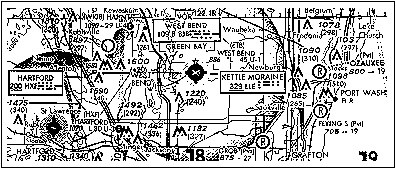
Vol. 2 No. 2 - March/April 1997
Available in full color at http://www.execpc.com/~sroensch/eaa
1997 Program Schedule - A full year of fun
Mailbag - West Bend HS aerospace course, voltmeter solution
From the Editor - Fly-outs, chapter survey,
electronic submission
President's Message - Let's get busy
Builders' Corner - Technical counselor and flight advisor
CFI Tips - VFR limitations, shockingly cool
Young Eagles Activity - Thanks for 150 Young Eagle flights
Personnel Notes - Oh baby, relocation
Classifieds - Howdy pardner
Calendar - Fly-out food and fun
Officers, Teams, Committees - Movers and shakers
On the Fly - Chapter patch, fly-in, Poberezny book,
seminar/workshops, survival class

 WEDNESDAY, FEBRUARY 19th - Chapter Meeting
- 7 pm, West Bend Airport
WEDNESDAY, FEBRUARY 19th - Chapter Meeting
- 7 pm, West Bend Airport
IMPORTANT: Please bring your 1997 dues payment of $10 to
the February chapter meeting. If you cannot attend
the meeting, please mail your payment to Glen Brandt,
643 N. Montgomery St., Port Washington, WI 53074,
phone 268-1648. Those who have not paid by March 31,
1997 will be removed from the chapter membership. SATURDAY, MARCH 15th - EAA Oshkosh
- 9 am, meet at West Bend Airport
SATURDAY, MARCH 15th - EAA Oshkosh
- 9 am, meet at West Bend Airport
 WEDNESDAY, APRIL 16th - Chapter Meeting
- 7 pm, West Bend Airport
WEDNESDAY, APRIL 16th - Chapter Meeting
- 7 pm, West Bend Airport
 WEDNESDAY, MAY 21st - Chapter Meeting
- 7 pm, West Bend Airport
WEDNESDAY, MAY 21st - Chapter Meeting
- 7 pm, West Bend Airport
 WEDNESDAY, JUNE 18th - Chapter Meeting
- 7 pm, West Bend Airport
WEDNESDAY, JUNE 18th - Chapter Meeting
- 7 pm, West Bend Airport
 WEDNESDAY, JULY 16th - Chapter Meeting
- 7 pm, West Bend Airport
WEDNESDAY, JULY 16th - Chapter Meeting
- 7 pm, West Bend Airport
 WEDNESDAY, AUGUST 20th - Chapter Meeting
- 7 pm, West Bend Airport
WEDNESDAY, AUGUST 20th - Chapter Meeting
- 7 pm, West Bend Airport
 WEDNESDAY, SEPTEMBER 17th - Chapter Meeting
- 7 pm, West Bend Airport
WEDNESDAY, SEPTEMBER 17th - Chapter Meeting
- 7 pm, West Bend Airport
 WEDNESDAY, OCTOBER 15th - Chapter Meeting
- 7 pm, West Bend Airport
WEDNESDAY, OCTOBER 15th - Chapter Meeting
- 7 pm, West Bend Airport
 WEDNESDAY, NOVEMBER 19th - Chapter Meeting
- 7 pm, West Bend Airport
WEDNESDAY, NOVEMBER 19th - Chapter Meeting
- 7 pm, West Bend Airport
 DECEMBER - No Chapter Meeting
DECEMBER - No Chapter Meeting


 Mailbag
Mailbag
 Paul Lupton writes:
Paul Lupton writes:
Cancellation alert! West Bend High School offers the course Aerospace Technology. This class has run for the last five years but was cancelled for fall '96 due to low enrollment. It is in danger of being cancelled again for fall '97 if the minimum sign-up of 20 students is not met by Feb. 28. You can help by spreading the word that this is a great course for high school students. The class meets after school and has 3 Saturday field trips. For more information contact Paul Lupton, 335-5582 (work), 338-1826 (home), cfiphd@aol.com. Thanks for your help.
Voltmeter Solution
 From Steve Roensch:
From Steve Roensch:
I recently followed a great tip I saw on an online Pipers list, and thought I'd share it with our chapter: A lot of planes (mine included) have an ammeter gauge, but no voltmeter. Monitoring the health of the electrical system would be easier with both, but who wants to spend hundreds of dollars to have a voltmeter installed? Voila! Enter Damark. They sell a "Vehicle Battery Voltage Meter" which plugs into the ciagarette lighter. It's small, weighs maybe 6 ounces, works on both 12 and 24V systems, and has both LED indicators and a digital LCD display. Best of all, it cost $14.99 plus $5.99 shipping! When I called them at 1-800-729-9000, they had trouble locating one for me, until I came up with catalog # 64731 and item # 504472. No more nagging doubt about the battery or system voltage - just pop in the meter.


Fly-outs
Chapter fly-outs have been scheduled for 2/15
(Janesville breakfast), 3/15 (EAA Museum) and
4/19 (Manitowoc breakfast).
For more information, see the "Calendar" section in
this issue, or call Jim Retzlaff, Fly-out Chairman,
at 414-338-3728.
If you own a plane, bring it out and enjoy a great
flight. If you rent, this is a great opportunity
to invite the spouse or a friend. If you're not
a pilot, call Jim to arrange for a seat.
Chapter Survey
To date, only 44 chapter surveys have been returned. This
represents just over half of our 80+ members.
If you have not completed a copy, please do so at the
February chapter meeting. Completing the survey takes less
than 5 minutes. If you cannot attend the meeting, please
leave me a message at 414-375-2228 with your fax number or
address, and be sure to complete and mail back your copy by
the end of February. Results will be published in the
next newsletter (due out in April), and will be used by our
Programming Committee to schedule events of interest to our
membership.
Electronic Submission
Publishing a newsletter is a time-consuming but rewarding task -
just ask our editors, reporters, proofreaders and publishing
team. However, everyone has busy lives, and volunteers should
not be expected to do unnecessary busy work. We are therefore
tightening our standards of article submission.
Mailbag input, classified ads, calendar items
and short "On the Fly" notes can still be submitted
however you please. Our preference, in order, is:
In addition, all members are
encouraged to submit articles for the larger sections in our
newsletter. Effective immediately, these submissions must be
in electronic (computer) format. Computers are readily
accessible to everyone - if in doubt, go to your local library.
(Bring a 3.5" diskette to store your article on - we will return
it to you.) Please submit your input in one of the
following formats:
Reminder: The deadline for submission is the 20th of each
odd month, for the issue that will be received on about the 10th
of the following month. This time is needed by the editors,
proofreaders, publishing team and post office. All submitters
are encouraged to meet the deadline.
With all these submission methods, it wouldn't hurt if you'd leave
a short message at 375-2228, indicating what you have submitted.
If the chapter feels that these guidelines are too restrictive,
we can ask for volunteers to a "typist committee". These people
would key in submitted articles and check for errors. This
solution would force us to move up the submission deadline
another week or two.

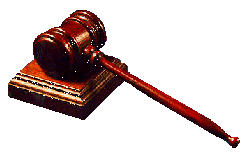
You will find our chapter has a full slate of events lined up
for the year. A list of the scheduled ones appears
in this newsletter. Your president has decided that
the only way to make this year successful and fun will be
to involve lots of people. What can be overwhelming for
one person can be enjoyable for a team as they split up the
workload. Activities such as our first Fly-In need ideas,
planning, coordination, and action. That's why you'll
see some clipboards being circulated at our next meeting,
asking people to participate in chapter activities.
We wouldn't ask for your time and effort unless it was important.
I hope that you have an enjoyable year. I'm looking forward
to working side by side with all of you in our many
chapter activities.
1997 will be a year for action in our EAA chapter.
The year started out with a "Plans night" social
that found almost 60 of our members and guests in attendance.
Each one had a chance to drool over some aircraft plans,
grab their significant other, and say "Wow, wouldn't it be
neat to build one of these!" Perhaps more importantly, we all had
a chance to get acquainted with some other chapter members and
their spouses or friends. Part of the fun in being an EAA Chapter
member is the camaraderie we all share. I encourage you to be
part of it.


The necessary qualifications are:
The benefits of being an EAA Technical Counselor or Flight Advisor are:


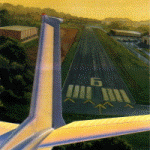
A case in point is the response heard from many applicants for
Private, Commercial, and even Instrument Ratings, when asked to
describe basic VFR limitations. They usually recite correctly
the cloud clearance and visibility requirements at various
altitudes as shown in the table, but stick with that source
for stating the minimums for takeoff, landing or entering
airspace within the lateral boundaries of the surface areas
of Class B, C, D and E airspace that is designated for an
airport... and that doesn't compute.
My opinion, in a previous article, of FAA's strange relaxation
of the rules for night VFR traffic pattern operations still
stands. But the apparent lack of student exposure and
understanding of daytime operations in the above airspaces
is cause for concern - especially considering the number of
people who have done all of their flight training based in
a Class D airport and are unable to say the magic words.
If asked when a Special VFR Clearance is required for departure
or arrival at a controlled airport (not Class B), the rote
reply is "when cloud clearance can’t be maintained at least
500' below, 1000' above and at least 3 miles visibility."
Next question: Can we then takeoff without a Special VFR
if the ceiling over the airport is 520 feet? That results
in some calculator use, a check of the airport elevation,
and a glassy stare as comatose sets in.
For airplanes the magic words are 1000' ceiling and at least
3 miles ground (or in-flight) visibility, and the rule is not
new - it’s even in my 45 year old flight training manual.
The problem is that for a number of years the details have been
buried in the text of PAR 91.155 (2)(c)(d) and must be carefully
read while keeping in mind the limits in 61.89(6) before student
pilots venture solo into controlled airport airspaces or their
Class E extensions.
The 1997 FAR AIM books are now available and are loaded with
new information to help us all stay proficient and legal. I
bought one yesterday. Happy reading!
Even with the new changes, there are still regulations which
require legal interpretations by people who may have to ask
someone else what they think it all means, and we may have
to live with that forever. But when certificate loss,
suspension or worse can be threatened due to ignorance
of critical information hidden in boring text while
concentrating on an adjacent eye-catching table taking
half the same page, the need for minimizing misunderstandings
is still alive.
Tip #6, by Mike Schram, CFI, West Bend Air
WHERE ARE THE QUESTIONS??
Last month we talked about the frozen skies. As usual we are
flooded with articles about thermal shocking engines. None
can agree. I have been teaching combustion engines for over
20 years and find most of the failures that I have difficult
to blame on thermal shock. Most appear to be related to poor
castings or not enough material, i.e. manufacturing failure.
Think for a moment about the tow planes that spend their entire
life going from full power to idle, split S fall 4000 feet, land
and shut down, cycle after cycle up to 60 or more times per day
with remarkably few failures. Where is the thermal shock? What
about overheated snowmobile engines that are doused with snow or
a CO2 fire extinguisher with no apparent damage? We don’t know
for sure that there is such a thing. WE DO KNOW THAT BABYING
YOUR ENGINE WON’T HURT IT EITHER! We also know that starting
is the toughest part of your engine’s life. Why not pre-heat
and keep the killing rpm at a minimum until the oil can do its
job? The best advice is to do it the safe way. Warm up slowly,
cool down slowly, and follow your engine manufacturer’s
recommendations carefully.
All pilots: If you are flying in slush, ice, etc. - Apply your
brakes on downwind a couple of times firmly. This will usually
flex the rotors enough to break the ice that has frozen and
assist in preventing a locked wheel on touchdown. Get rid of
those wheel pants as they too are slush catchers.
Retract. Pilots: Cycle your gear several times after takeoff
to clear some of the slush and ensure that it doesn't pile up
inside your wells and freeze the doors shut.
Best set of well trained pilots in the world. No questions?
Please if you think of one drop it off at the desk at W.B.A
c/o Mike and I will get right on it. Help me out with your
flying questions.

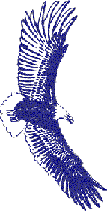
Even before chapter 1158 was officially formed, its members
were active in the Young Eagles program. Some of the pilots
had been flying Young Eagles for several years. The first
official program for chapter 1158 was the West Bend Airport
Open House in September, 1996. Seventy-two rides were
provided on that day before the weather shut us down.
Currently, EAA headquarters records show the following
number of Young Eagles flown by chapter 1158 members:
The total of 150 Young Eagles is an indication of the
commitment that the members of our chapter have made
to this program. Every member should be proud of this
record.
If there are corrections to these numbers, or other pilots
who have flown Young Eagles before our chapter was formed,
or pilots not listed who want their flights to be credited
to our chapter, please call Don Brinkley at 414-335-6519.
Several 1997 Young Eagle programs are already scheduled, and it
is expected to be a good year. Any and all members are invited
to take part in the upcoming events, either on the ground or
as a pilot.
Again, thanks to all.
Jack Hinterberg ( 2) Nora Price (15)
Kris Hinterberg (18) Jim Retzlaff (37)
Kyle Howard ( 6) Steve Roensch (14)
Paul Lupton ( 3) Ken Seidl (28)
Allan Price (27)
(Note: Online members may check their flight count
anytime - follow our home page Young Eagles link to the
online version of the World's Largest Logbook - Editor)

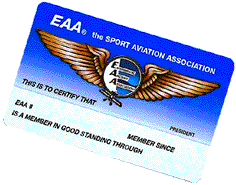
Chapter members Barb and George Connelly welcome a new baby
girl, born on January 12th, 1997. Our heartiest
congratulations...
Chapter member Ralph Rahn has relocated to Arkansas. You can
drop him a line at 24 Barcelona Way, Hot Springs Village,
Arkansas, 71909-2858. He says to say "Hi" to Lou Scepanski
and Bill Groeneveld.


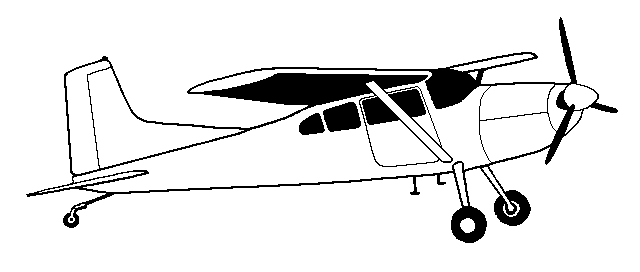

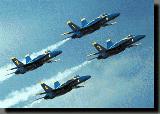
Chapter Meeting: 3rd Wednesday of each month, 7:00 pm (Bring a chair) West Bend Airport, Hwy 33 East, West Bend, WisconsinChapter Events
2/15/97 - Fly-out Breakfast - Janesville Meet at West Bend Airport at 8:30 am 3/15/97 - Fly-out/Drive-out to Oshkosh - EAA Museum Meet at West Bend Airport at 9:00 am 4/19/97 - Fly-out Breakfast - Manitowoc Meet at West Bend Airport at 8:30 am

(Officers July 1996 - December 1997)
Area Code 414
President Howard Kaney 334-9451 hkaney@execpc.com
Vice President Richard Feldschneider II 414-677-3416
Secretary Allan Price 334-1278
Treasurer Glen Brandt 268-1648
Board Members Don Brinkley 335-6519
Allen Bruggink 335-6459
Ron Champeny 334-4309
Steve Roensch 375-2228 sroensch@execpc.com
Young Eagles Coordinator Don Brinkley 335-6519
Fly-out Chairman Jim Retzlaff 338-3728
Historian Ernestine Lynfoot 377-9163
Internet Webmaster Steve Roensch 375-2228 sroensch@execpc.com
Home Page http://www.execpc.com/~sroensch/eaa
Newsletter:
Editor Steve Roensch 375-2228 sroensch@execpc.com
Assistant Editor Gary Lackie 375-0859 glackie@execpc.com
Reporters Paul Lupton 338-1826 cfiphd@aol.com
Ernestine Lynfoot 377-9163
Jim Rodrian 377-4320 jrodrian@elsyn.com
Greg Schmidt 284-0918 magrew@aol.com
Proofreaders Kris Hinterberg 334-1809 kris@hinterberg.com
Kyle Howard 334-2624 kyle@hnet.net
Charlie Puckett 375-0859 cpuckett@execpc.com
Publishing Team:
Chairman Russ Kaye 284-3695 rkaye@execpc.com
Don Brinkley 335-6519
Bill Groeneveld 334-9436
Gary Lackie 375-0859 glackie@execpc.com
Paul Lupton 338-1826 cfiphd@aol.com
Marv Powell 791-4737
Rick Woyak 338-3801
Sandra Zorn 626-8764
Membership Committee:
Chairman Dan Staehler 338-1351 staehler@execpc.com
Welcoming Chairman Allan Price 334-1278
Recognition Committee:
Chairman Allen Bruggink 335-6459
Don Brinkley 335-6519
Program Committee:
Chairman Ron Champeny 334-4309
Allen Bruggink 335-6459
Terry Ganzel 338-1574
Bill Groeneveld 334-9436
Howard Kaney 334-9451 hkaney@execpc.com


Don't forget the deadline for the chapter patch contest is our February 19th chapter meeting. The winner will receive an official EAA jacket in their size. Contact Allen Bruggink at 414-335-6459 for details. Be sure to attend the February meeting to get a chance to vote.
Fly-in Volunteers Wanted!
Would you like to be in on the ground floor of a project? Want the hardest job done for you? Then let us recruit the volunteers, and you help your chapter organize our first annual fly-in. It's not too early for publicity, facilities arrangement, etc. We know we'd like to have it in June, but the format is up to you. Look for the volunteer sign-up clipboard to be passed around at our February meeting. The more we have, the less work it will be.
"Poberezny - The Story Begins..."
You've read about him. You've heard about him. You've heard him speak at one of our first chapter meetings. He's even a member of Kettle Moraine EAA Chapter 1158 (and of every other chapter...). Now, learn how it all started, from Paul and Audrey Poberezny's humble beginnings through the birth of EAA. This is a "first edition", focusing on their early years. A future volume (volumes?) is expected to follow. The team that worked on this "labor of love", Paul, Audrey and Bonnie Poberezny and Chuck Parnall, decided to produce and market the 300-page book on their own - not as an EAA-sponsored project. Prices are $39.95 hard bound standard edition, $79.95 "Signature Edition" (leather bound, with personal inscription from Paul and Audrey), $109.95 for both editions, plus 5% sales tax and shipping of $5 per book. For more information, contact Bonnie Poberezny, Red One Publishing, P.O. Box 3031, Oshkosh, WI 54903-3031, or try Dick Knapinski, EAA Oshkosh, dknapinski@eaa.org
Seminar & Workshops
The 1997 Wisconsin Ultralight Safety Seminar is scheduled for Saturday, February 22, from 9 am to 4 pm (registration 8 am), at the Mead Inn, Wisconsin Rapids, 715-423-1500. Special safety seminar hotel rates are available - call 1-800-843-6323. "Tons of door prizes and big ticket raffle items." For more information, call Harold Benisch, work 608-271-7617, home 414-623-4457, or Bart Gaffney, 414-567-4486.
The EAA/SportAir Builders' Workshops 1997 schedule has been released. Nearby locations include Aurora, IL 5/31-6/1, and Minneapolis, MN 7/19-7/20. Contact SportAir at 1-800-WORKSHOP (1-800-967-5746), workshops@sportair.com, web site www.sportair.com.
Skills in Survival - Looking for Class Participants
"...family of four was found huddled inside the wreckage of a single engine airplane about 16 hours after crashing into the forest. Fog and driving rain had hampered rescue efforts."
If you heard Roger Johnson speak at our Chapter meeting last year, you know how real and dangerous this situation can be. Why not invest a little of your time and a few of your dollars in a course designed to acquaint you with the skills required in the event of an off-airport landing? Insurance helps protect us against losses, but it’s only good if we can walk out and tell someone about it. Spend 1/10th that amount on something that really matters - you!
We’re trying to round up 10 people to organize a course taught
by Roger on general aviation survival skills - patterns of
survival, signaling, shelters, firecraft, food and water
procurement, etc. We’ll also build a survival kit for use
in our aircraft. All this for $75 and 8 Monday nights.
The survival kit alone out of Sporty’s is $169.95! Look
for the sign-up clipboard at our February meeting.


This and all Kettle Moraine EAA Chapter #1158 newsletters are
provided for your enjoyment only. No claim is made and no
liability is assumed, expressed or implied as to the accuracy
or safety implications of any material presented. Viewpoints
of the writers are not necessarily those of this or any EAA
Chapter or of the Experimental Aircraft Association (EAA).
Use of any of the material presented, whether by applying,
copying or quoting, is done solely at the risk of the user.
  Chapter Newsletter Index Chapter Newsletter Index
|
  |


 Kettle Moraine EAA Chapter #1158 Webmaster
Kettle Moraine EAA Chapter #1158 Webmaster